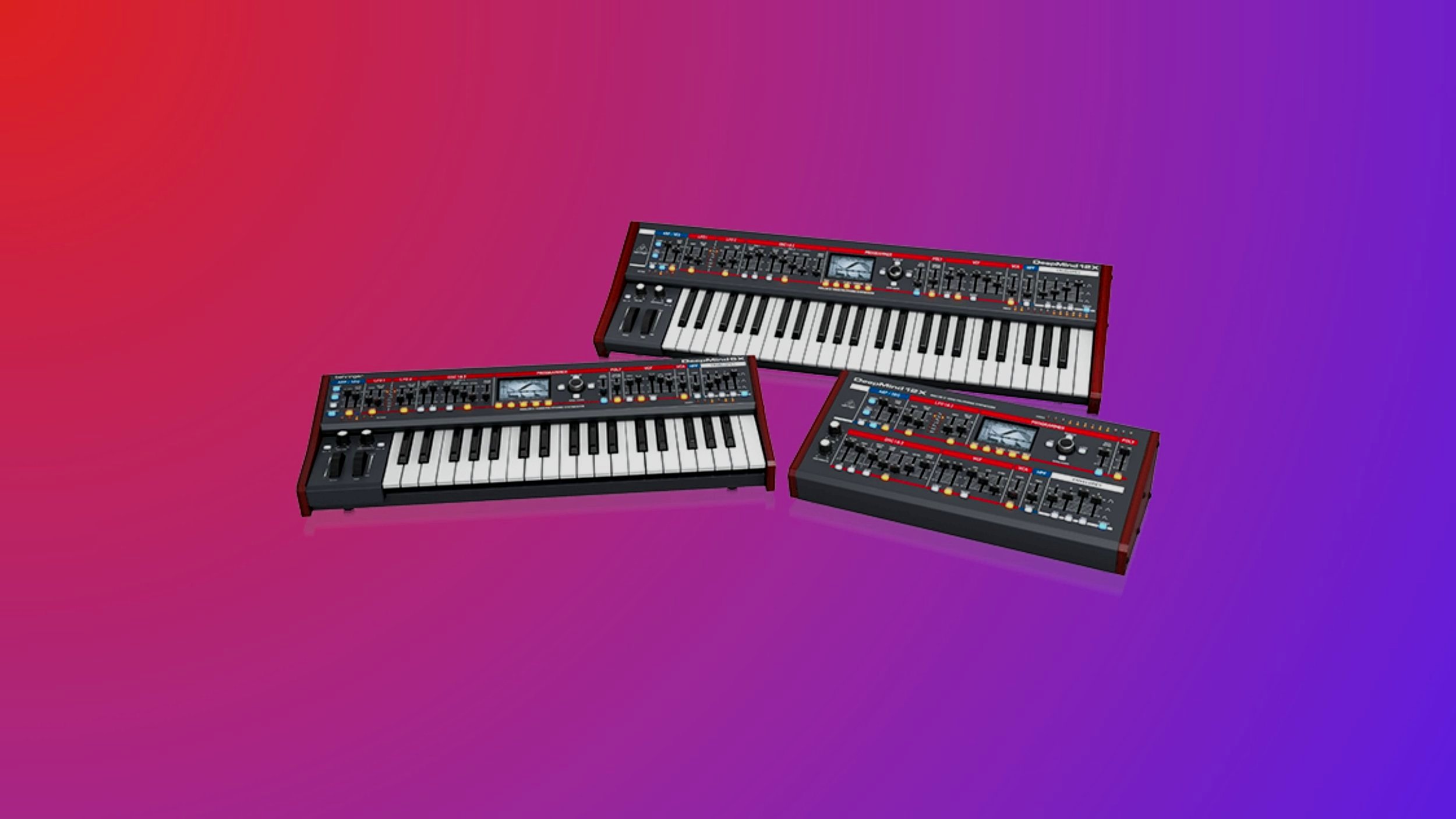Behringer Announces DeepMind X Series: A Fresh Look for a Modern Classic

Behringer just dropped a surprise update to one of its most well-loved synths: the DeepMind X series, a refreshed version of the original DeepMind analog polysynth launched nearly a decade ago. This new release isn’t a full redesign or next-gen overhaul—it’s more of a celebration. With updated aesthetics and the same powerful engine under the hood, the X series marks the synth’s 10th anniversary by giving it a visual reboot and reminding everyone why it became a staple in the first place. But in a synth market that’s more crowded than ever—with boutique analogs, budget clones, and hybrid digital beasts—does the DeepMind X still hold up in 2025? Is this updated look enough to bring it back into the conversation, or is it just a cosmetic refresh for existing fans? Here’s a closer look at what’s new, what’s familiar, and how the DeepMind X stacks up in today’s landscape.
Behringer Announces DeepMind X Series: A Fresh Look for a Modern Classic
A Juno-Inspired Glow-Up
Same DeepMind DNA Under the Hood
DeepMind X Series: Three Models to Choose From
Not Just a Clone—More Like a Juno Reimagined
Alternatives to Consider
Is the DeepMind X Right for You?
Disclosure: This post contains affiliate links. If you buy something through these links, I may earn a commission at no extra cost to you. As an Amazon Associate, I earn from qualifying purchases. Prices
1. A Juno-Inspired Glow-Up
The first thing you’ll notice about the DeepMind X series is the new color scheme. Gone is the muted, almost clinical look of the original—now replaced with brighter, retro-inspired panel colors that clearly nod to the Roland Juno-106. It’s a fresh take that immediately gives the synth more personality, and it makes sense as a visual tribute for the DeepMind’s 10th anniversary.
But this isn’t just a paint job. The new design adds a little joy to the interface without sacrificing clarity. Everything’s still laid out in the same familiar DeepMind style—functional, clean, and knob-forward—but the updated look makes the synth feel more like a modern classic and less like a utilitarian piece of kit.
It also helps set the DeepMind X apart from Behringer’s more clone-heavy lineup. While many of their synths aim for historical accuracy, this one feels more expressive—like an instrument with its own identity. It might be a small change, but for many users, it makes a big difference in how the synth feels in your space.
2. Same DeepMind DNA Under the Hood
Underneath the new look, the DeepMind X is still very much the same synth that earned a cult following when it first launched. Available in 6-voice and 12-voice versions (plus a new 12X Desktop model), it’s a true analog polysynth powered by DCOs for stable tuning and a warm, rich tone.
Each voice includes two oscillators with classic waveforms, routed through a resonant analog low-pass filter with 12/24 dB slope options. You get four envelopes, three LFOs, a powerful modulation matrix, and even onboard control over analog-style drift—so it can go from clean and precise to characterfully unstable.
On top of that, there are three built-in effects engines (with algorithms from TC Electronic and Klark Teknik), a 32-step sequencer, arpeggiator, aftertouch, and deep MIDI/CV integration. It’s the kind of synth that can handle lush pads, punchy basslines, and evolving textures without needing a mountain of outboard gear or plugin processing.
DeepMind X Series: Three Models to Choose From
Behringer didn’t just refresh one synth—they’ve launched a full trio under the DeepMind X banner. Each version offers the same analog sound engine but caters to different setups and workflows. Here’s a quick breakdown of what each model brings to the table:
DeepMind 6X
The 6X is the updated version of the original 6-voice DeepMind synth. It features the same analog architecture and effects engine in a more compact form, ideal for smaller setups or live rigs where space matters. The new color scheme gives it a more playful, Juno-inspired vibe, and it’s one of the most affordable true analog polysynths on the market.
DeepMind 12X
The flagship model returns with 12 voices of analog polyphony. This one’s built for serious studio work, layering, and deep sound design. You get the same classic DeepMind engine with more headroom for complex patches, and the full-size keyboard and expanded voice count make it a great all-rounder. With the new design, it looks more like a premium instrument than ever.
DeepMind 12X Desktop
Everything you get in the 12X, just without the keyboard. It’s perfect for producers with a MIDI controller or a space-limited studio. It keeps all 12 voices, the full modulation matrix, and the FX section. The desktop form factor makes it rackable and easier to integrate into hybrid setups. Pricing hasn’t been announced yet, but expect it to be the most compact 12-voice option.
3. Not Just a Clone—More Like a Juno Reimagined
When the original DeepMind launched, it drew instant comparisons to the Roland Juno-106. And those comparisons weren’t unfounded—both synths use DCOs for tuning stability, feature a classic low-pass filter, and lean heavily on lush onboard chorus for character. The new X series color scheme even reinforces that connection, with clear visual nods to the Juno's panel design.
But here’s what sets the DeepMind apart: it was never a clone. While Behringer has built much of its synth reputation on recreating vintage gear, the DeepMind was something different from the start. It took cues from the Juno, sure—but it added more voices, a deeper modulation engine, digital FX, and sequencing. It was, and still is, more of a “what-if” than a throwback.
In fact, it’s arguably the most original synth Behringer has ever made. The DeepMind may have started as a nod to a classic, but over the years it carved out its own identity—and the X series refresh leans into that legacy rather than hiding from it.
4. Alternatives to Consider
The DeepMind X isn’t the only game in town if you’re chasing lush analog poly sounds—especially if you’re drawn to that classic Juno-style vibe. Several modern synths explore similar sonic territory, each with their own approach to price, features, and workflow.
If you want something closer to a true Juno clone, the Roland JU-06A is your most direct option. It’s a compact module from Roland’s Boutique line that blends elements of the Juno-60 and 106, complete with the iconic chorus and that instantly recognizable tone. It’s a solid choice if portability and authenticity are your top priorities, though it lacks the deeper modulation and effects engine of the DeepMind.
The TAL-U-NO-LX isn’t hardware—it’s a VST—but it’s worth a mention for its incredible emulation of the Roland classic. If you're open to software or hybrid setups, it's a budget-friendly way to get that vintage Juno character in your DAW.
For more modern takes on analog poly, the Korg Minilogue XD remains a popular option. It’s smaller than the DeepMind, with fewer voices (four), but adds digital oscillator tricks and a very immediate workflow. It’s also lighter on modulation, making it more beginner-friendly but slightly less flexible for complex patches.
There’s also Arturia’s MiniFreak and Hydrasynth Explorer, both of which lean more digital but offer deep modulation and unique character. They’re not analog—but if you’re more focused on sound design potential than analog circuitry, they could be strong alternatives in a similar price range.
Overall, the DeepMind X still holds a unique spot: it gives you real analog polyphony, built-in effects, and a full-sized interface—all at a relatively accessible price. For that blend of vintage warmth and modern control, there’s still not much else quite like it.
Is the DeepMind X Right for You?
If you’re looking for an affordable analog polysynth that balances classic tone with modern features, the DeepMind X is still a strong contender in 2025. It sounds great, it’s built for hands-on control, and the updated design gives it a more inviting, personality-filled look. For producers who want rich pads, evolving textures, or vintage-flavored leads without diving into modular or spending boutique-level money, it ticks a lot of boxes.
That said, it’s not for everyone. If you already own a DeepMind, there’s no reason to upgrade unless the new look speaks to you. And if you’re chasing wavetable synthesis, hybrid engines, or extreme modulation options, you might find more excitement elsewhere. But if what you want is a reliable analog workhorse with a bit of flair—and you're new to the DeepMind family—this anniversary edition might be the best version yet.
Disclosure: This post contains affiliate links. If you buy something through these links, I may earn a commission at no extra cost to you. As an Amazon Associate, I earn from qualifying purchases.



